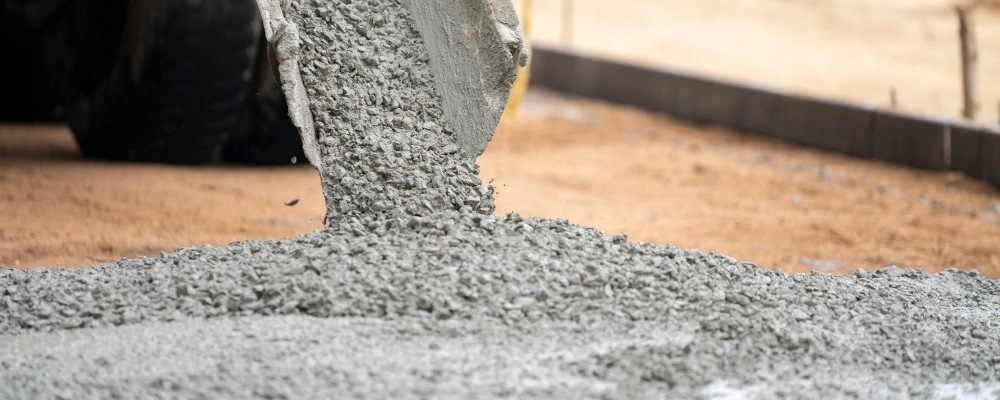Concrete has been used as a building material since Roman times. It is mostly made up of four materials: cement, sand, aggregates and water. Every year, people all over the world build a huge number of different types of structures out of concrete. Normal concrete can’t do what it’s supposed to do because of changes in the building industry recently. For making heavy structures like bridges, multi-story buildings, seashore structures, and many more, there is a huge need for advanced concrete, which can meet the needs of higher strength and ease of construction.
To fulfil those requirements, different experts are investigating the macrostructure and nanoscale of concrete. Hence, the industry is introducing the use of nanotechnology in concrete. So, with Brick & Bolt, let’s explore nanotechnology in concrete, including what it is, the benefits of nanotechnology in concrete and its recent developments.
What is Nano-Technology in Concrete?
To understand the term ‘Nanotechnology in Concrete’, you first need to understand what nanotechnology is. So, “Nanotechnology” is often used as a “catch-all” term for anything very small, but in general, it means “understanding, controlling, and restructuring matter on the order of nanometers” (less than 100 nm) to make materials with fundamentally new properties and functions.
Nanotechnology in concrete includes the addition of nanoparticles to the cementitious material to enhance the overall performance and properties of concrete, such as its workability, durability, compressive strength, shrinkage, and more. As mentioned above, these nanoparticles are typically 1 to 100 nanometers in size. They can be derived from various materials such as silica, carbon, titanium dioxide, and others. Micro-silica or nano-silica is strongly advised for usage in ready-mix concrete since it improves the concrete’s elasticity, durability, and mechanical properties.
Benefits of Nanotechnology in Concrete
The following are the benefits of nanotechnology in concrete.
1. Enhances Strength and Durability
Nanoparticles can fill in the gaps between the ingredients of concrete, such as cement particles, sand, and aggregates, which makes it denser and enhances its strength and durability. This higher packing density makes the concrete less porous and increases its resistance to cracking, abrasion, and chemical attack.
2. Increases Flexibility and Ductility
Nanoparticles can modify the microstructure of concrete, making it more flexible and ductile. This makes it easier for microcracks to form and makes the material better able to handle dynamic loads like earthquakes.
3. Enhances Workability and Performance:
Nanoparticles can act as lubrication that makes it easier for cement particles to spread out and makes fresh concrete easier to work with. In addition, they can accelerate or retard the hydration process, which allows better control over setting time and early strength development of the concrete.
4. Self-Healing Properties
Some nanoparticles, such as nano-sized calcium carbonate or polymers, can repair cracks in concrete on their own. Environmental factors like changes in moisture or pH levels activate these nanoparticles. Once they get active, they combine with the materials around them to fix cracks and prevent further damage.
5. Easy Modification for Specific Applications
Nanoparticles can be used with various admixtures or additives to modify the specific properties of concrete. For example, nano-sized photocatalysts like titanium dioxide can be mixed into concrete to facilitate self-cleaning surfaces or to reduce air pollution by breaking down organic pollutants in the air.
Recent Developments in Nanotechnology in Concrete

Products based on nanotechnology are now available on the market to decrease concrete’s permeability by adding nanoparticles as a solution. As per ‘The Constrofacilitator’, following are the recent developments in nanotechnology in concrete.
1. Nano-cement Portland cement
When compared to traditional Portland cement, the composition of nano-cement, which is made up of calcium silicate-based nanoparticles created via flame spray synthesis, exhibits a tenfold improvement in early reactivity.
2. Nano-fume
High-strength concrete can be created using nano-fume, an ultrafine powder admixture of amorphous SiO2 made from fly ash combined with regular Portland cement.
3. Nanometer-sized franklinite particles
Concrete made with nanometer-sized franklinite particles from an electric arc furnace has shown higher strength than concrete produced alone with Portland cement.
4. Iron oxide nanoparticles
Iron oxide nanoparticles are utilized in concrete to provide it with more strength and resistance to abrasion.
5. Organo-modified montmorillonite particles
Hydrophobic organo-modified montmorillonite particles have shown instantaneous strength and a commercially significant decrease in the permeability of cement mortar and concrete.
6. Carbon Nanotubes
Carbon nanotubes are very strong nanoreinforcements found in cement-based materials..
7. Nanoporous thin film
It has been discovered that applying a nanoporous thin coating on aggregate surfaces prior to concrete mixing is an efficient method of enhancing the Interfacial Transition Zone and, therefore, the concrete’s performance.
8. Titanium dioxide nanoparticles
Titanium dioxide nanoparticles can quickly hydrate, reach a higher degree of hydration, and clean themselves (in concrete); they are superhydrophobic, don’t fog, and don’t collect dirt (in windows), and they can generate electricity without using fuel (in solar cells).
9. Silicon dioxide nanoparticles
Nanoparticles of silicon dioxide: they improve fire resistance, cooling, light transmission, and mechanical strength reinforcement in concrete; they also improve flame-proofing and anti-reflection properties in windows.
Conclusion
To sum up, there is still so much to learn about the use of nanotechnology in sustainable construction despite the amazing progress that has been documented. Enhancing the properties of concrete, such as workability, strength, and durability, which have been shown to depend on the nanoscopic characteristics of its constituents, is one of the advances in the use of nanotechnology in sustainable construction. Therefore, it is expected that the use of nanotechnology to modify the molecular and atomic structures of these materials and their components at the nanoscale would significantly improve the performance of concrete and sustainable building materials in the future.

